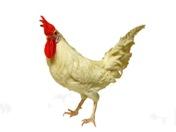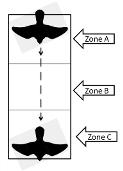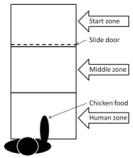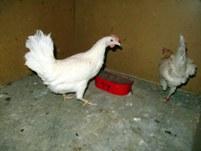Material

Two batches with a total of 164 chickens from an advanced intercross line between red junglefowl and White leghorn were used. They were the F9 generation and bred to be either homozygotes or heterozygotes for the TSHR gene (w/w, w/d and d/d).
Methods

Aerial predator test
In the aerial predator test the chicken's response to a hawk silhouette was recorded. The behaviours that occured before and after the release of the silhouette were measured and compared, as well as their reaction to the silhouette.

Fear of human
The fear of human test investigated the chickens' fear response to a human. The chickens were deprived of both food and water for about 30 minutes prior to the test. A human were placed outside the human zone with a hand in the middle with chicken food. Behaviours were measured and latency until the chicken left the startbox, latency until entering the human zone and latency until start to feed from hand.

Social dominance
The social dominance test was conducted to assess which one of two individuals of the same sex that accessed a limited resource first. We used meal worms in a feed trough covered with plexiglas with a hole i the middle as the limited resource. The dominant chicken were the one that accessed the resource first combined with observation of antagonistic behaviours. The different genotypes were tested against each other.

Tonic immobility
The tonic immobility test measures how long the chicken stays in it when placed up side down and how many attempts it takes. The chickens were placed up side down in a cradle outside their homepen in darkness. The observer stood absolutely still and had a head lamp directed away from the chicken. The latency until the chicken's first head movement and the latency until the chicken righted itself was observed. Each chicken got three chances to enter tonic immobility and got scored thereafter.
Responsible for this page:
Director of undergraduate studies Biology
Last updated:
05/16/12
